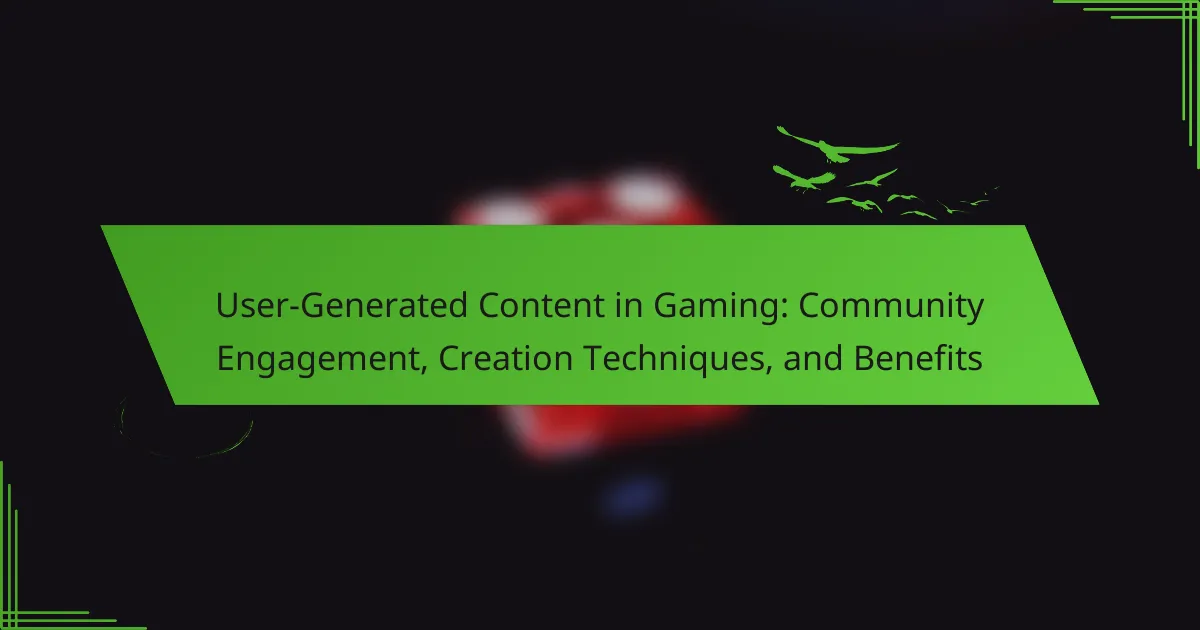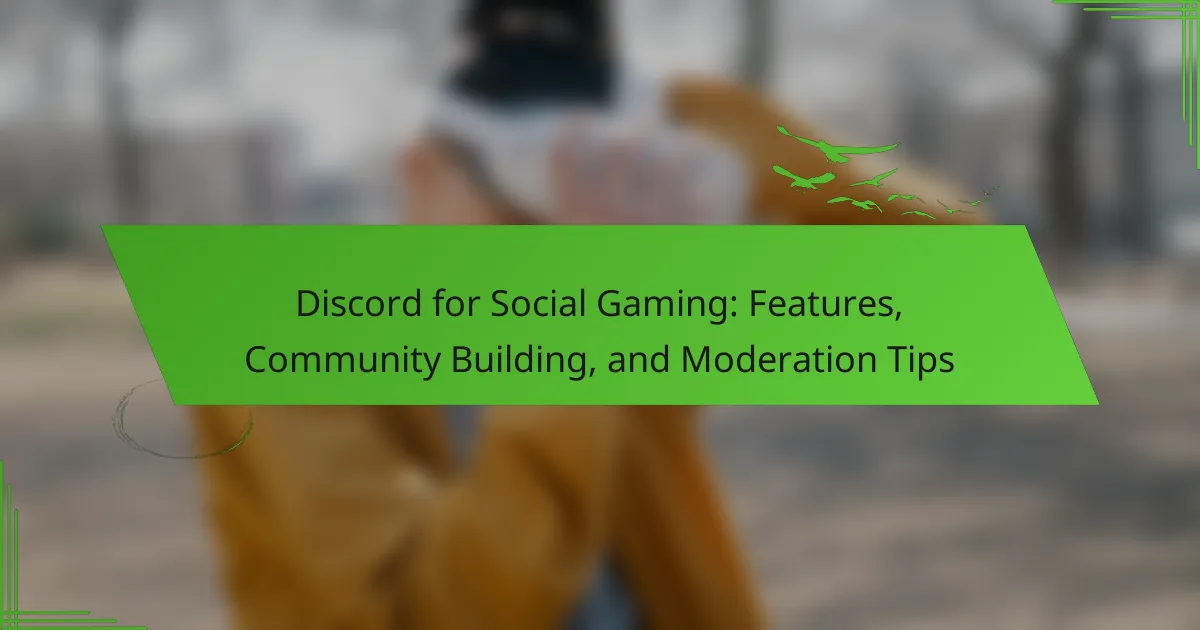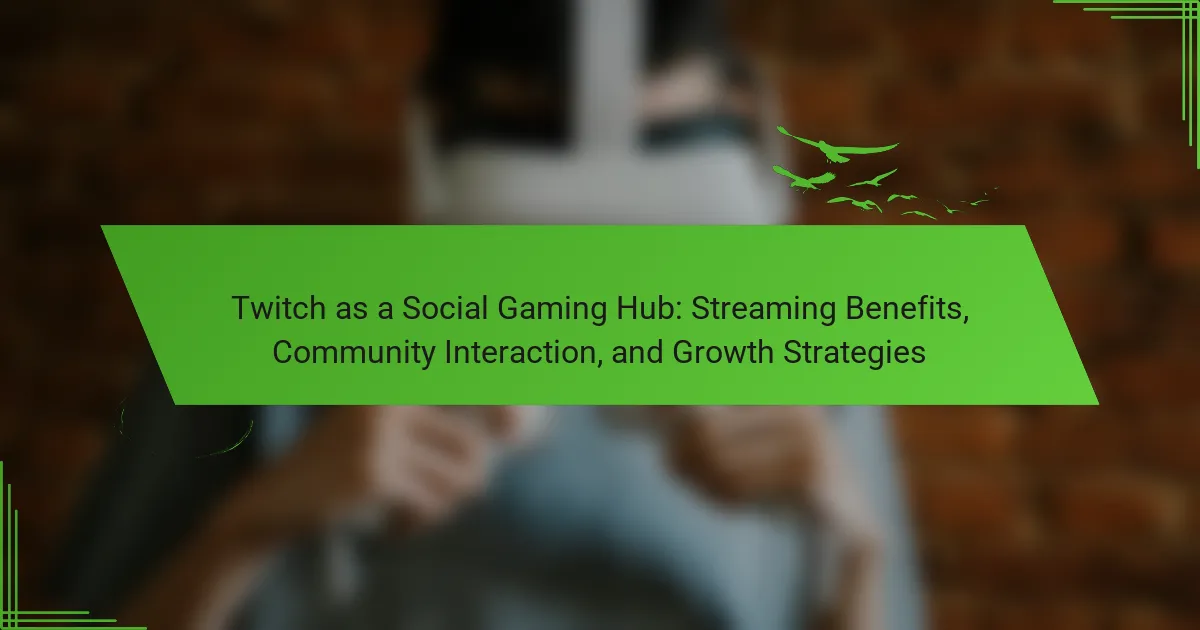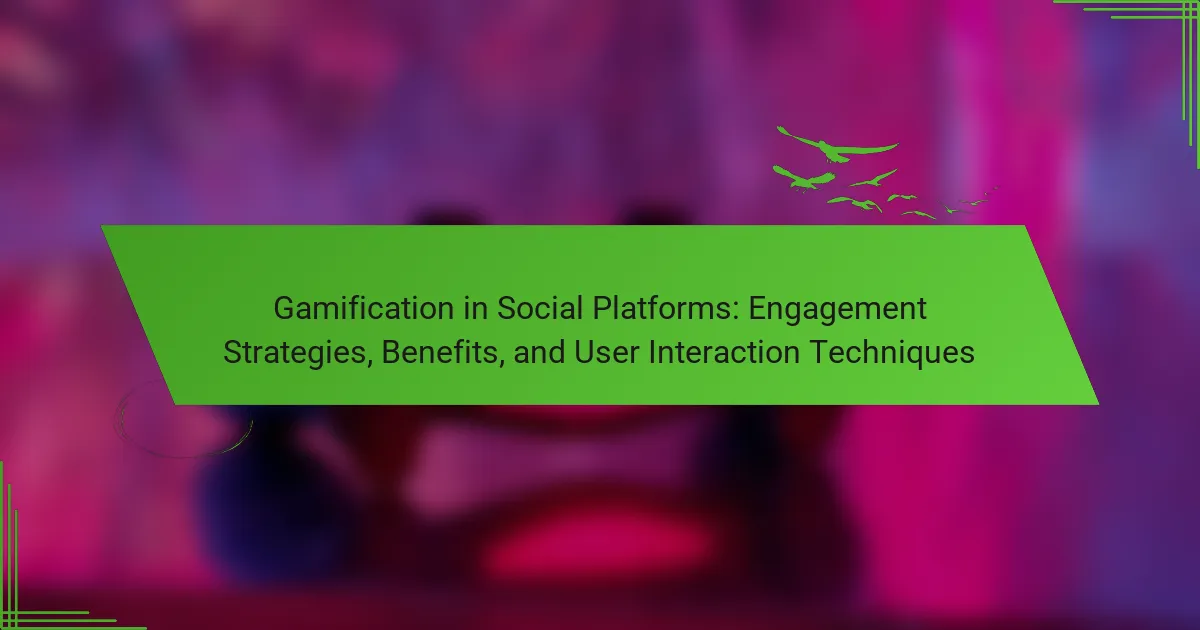User-generated content in gaming enhances community engagement and fosters creativity among players. This article explores creation techniques like modding and streaming, the benefits for developers and players, and the impact of cultural differences. It also addresses challenges faced by creators and offers strategies to optimize engagement within gaming communities.
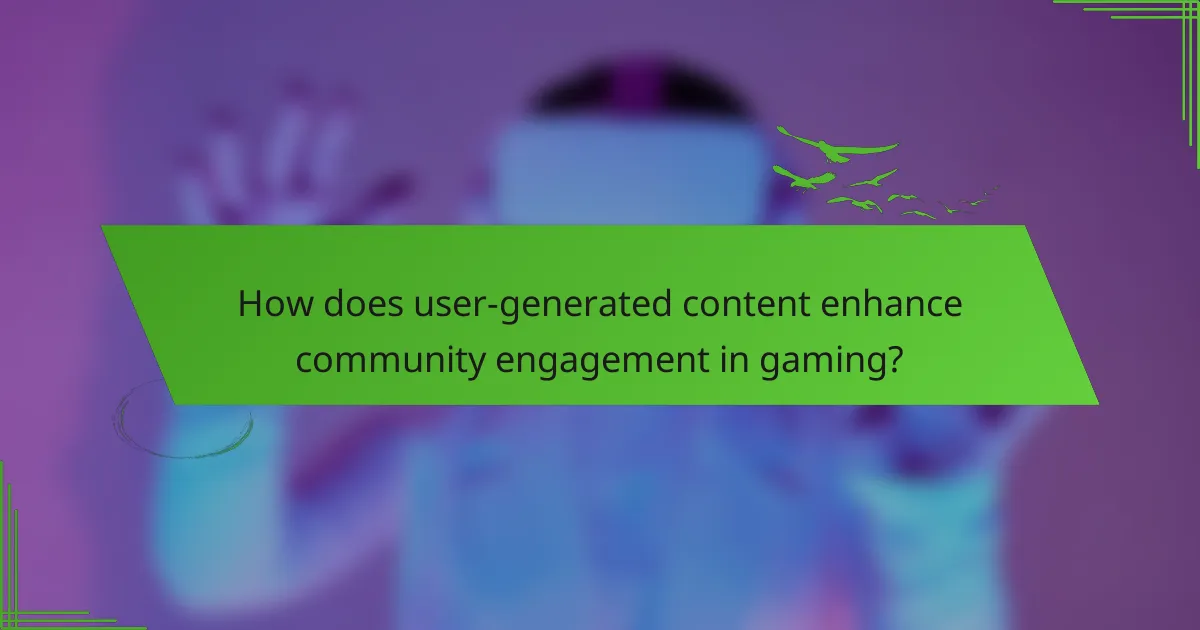
How does user-generated content enhance community engagement in gaming?
User-generated content significantly enhances community engagement in gaming by fostering collaboration and creativity. Players contribute their designs, stories, and experiences, creating a sense of ownership and connection. This participation leads to increased interaction among players, strengthening community bonds. Additionally, user-generated content promotes diverse gameplay experiences, attracting new players and retaining existing ones. As a result, gaming communities become more vibrant and engaged, ultimately benefiting the game’s longevity and success.
What role do online platforms play in fostering user-generated content?
Online platforms significantly enhance user-generated content by providing tools for creation, sharing, and community interaction. These platforms empower gamers to express creativity, collaborate, and build communities around shared interests. User-generated content fosters engagement, as players contribute gameplay videos, mods, and artwork, which enrich the gaming experience. Furthermore, platforms facilitate feedback and collaboration, allowing creators to refine their work based on community input. This dynamic interaction leads to a vibrant ecosystem where both developers and players benefit from innovative ideas and diverse content.
Which community-driven events promote content creation among gamers?
Community-driven events that promote content creation among gamers include game jams, modding contests, and fan art competitions. These events foster collaboration and creativity, allowing participants to showcase their skills and connect with others. Game jams encourage rapid development of new ideas, while modding contests invite players to enhance existing games. Fan art competitions celebrate artistic expression within gaming communities.
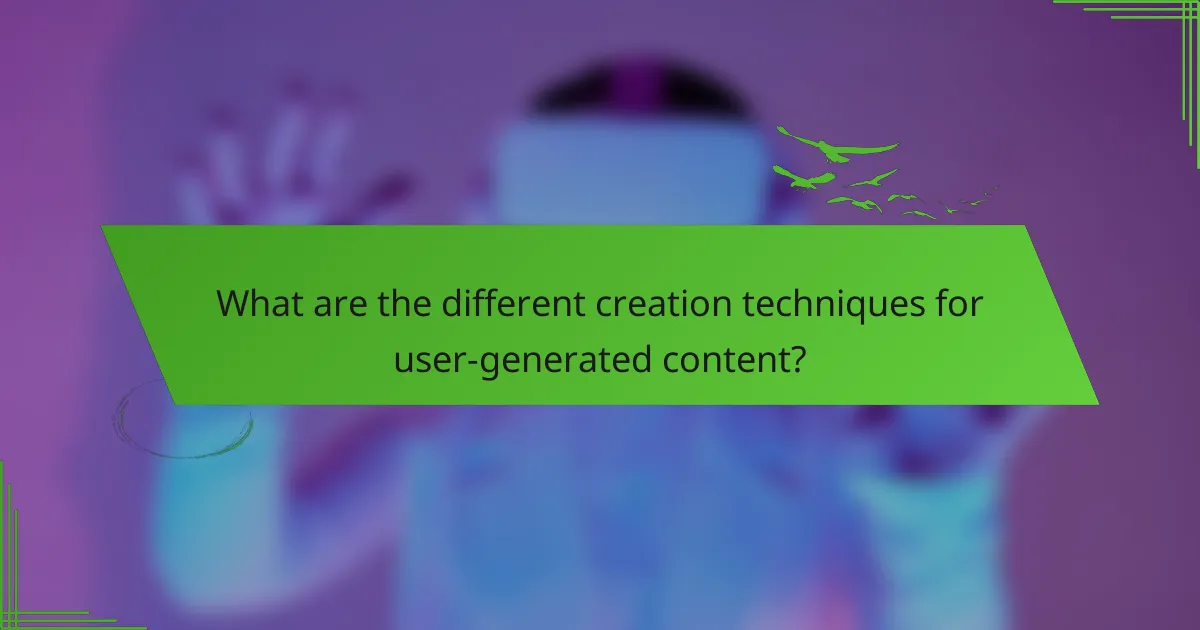
What are the different creation techniques for user-generated content?
User-generated content in gaming can be created through various techniques that enhance community engagement. Key techniques include modding, where players create custom modifications; streaming, allowing players to share gameplay live; and fan art, where players express creativity through visual media. Each technique fosters collaboration and strengthens community bonds. Additionally, contests and challenges encourage players to generate content, leading to increased participation and interaction within the gaming community.
How can gamers utilize game engines to produce content?
Gamers can utilize game engines to produce content by leveraging built-in tools and resources. These engines often provide user-friendly interfaces, asset libraries, and scripting capabilities that facilitate content creation.
Game engines empower users to create mods, levels, and entire games, enhancing community engagement. For example, Unreal Engine and Unity offer extensive documentation and tutorials, making it easier for gamers to learn and implement their ideas.
The benefits of using game engines include fostering creativity, improving technical skills, and contributing to a vibrant gaming community. User-generated content can lead to increased game longevity and player retention, as fresh content keeps the community active and engaged.
What tools are available for creating user-generated content in popular games?
Various tools enable user-generated content creation in popular games, enhancing community engagement. Notable platforms include Minecraft’s in-game editor, Roblox Studio for game development, and Fortnite’s Creative mode. Each tool offers unique features like customizable assets, scripting capabilities, and collaborative environments. These tools empower players to design unique experiences, fostering creativity and interaction within gaming communities.
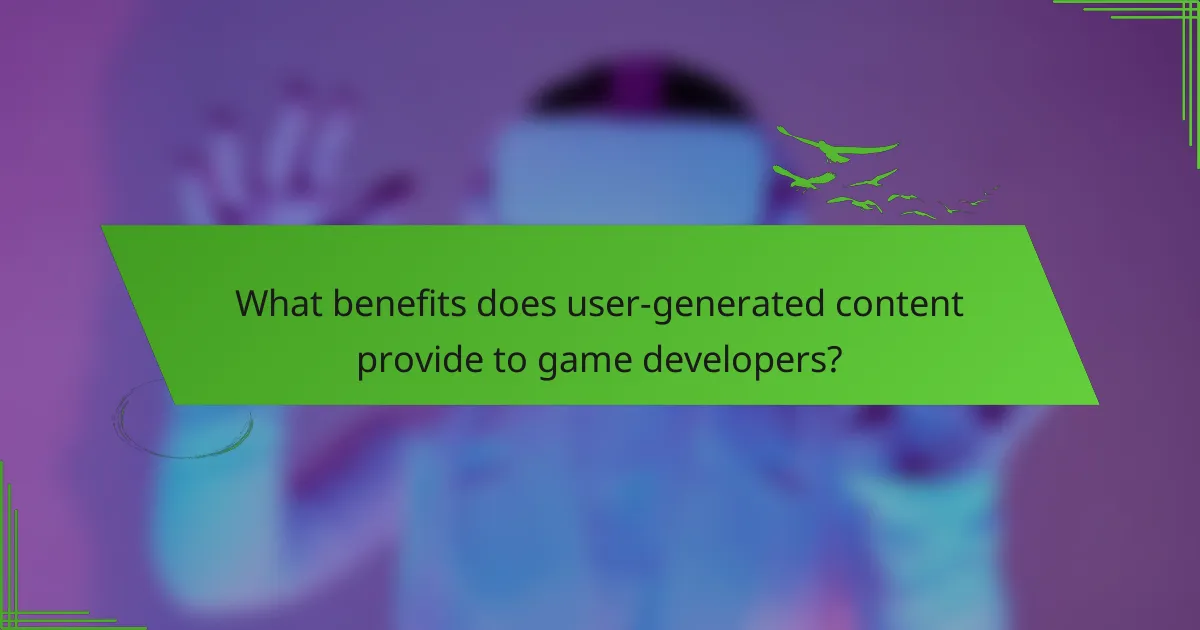
What benefits does user-generated content provide to game developers?
User-generated content provides game developers with enhanced community engagement, increased player retention, and diverse gameplay experiences. It fosters a sense of ownership among players, encouraging them to contribute creatively. This collaboration can lead to innovative game features and a loyal player base. Additionally, user-generated content often results in valuable feedback, allowing developers to refine and improve their games based on community input.
How does user-generated content influence game longevity and player retention?
User-generated content significantly enhances game longevity and player retention by fostering community engagement. Players feel a sense of ownership and connection, leading to increased participation. Custom content, such as mods or levels, keeps the game fresh and encourages players to return. Additionally, platforms for sharing creations strengthen social bonds among players, creating a vibrant ecosystem that sustains interest over time. This community-driven approach can lead to higher player satisfaction and extended game life.
Which financial benefits can arise from user-generated content initiatives?
User-generated content initiatives can significantly enhance financial outcomes for gaming companies. They foster community engagement, leading to increased user retention and acquisition. Enhanced brand loyalty often results in higher lifetime value per user. Additionally, user-generated content can reduce marketing costs by leveraging organic promotion through community sharing. This approach also opens avenues for monetization through in-game purchases and sponsorships tied to community-created content.
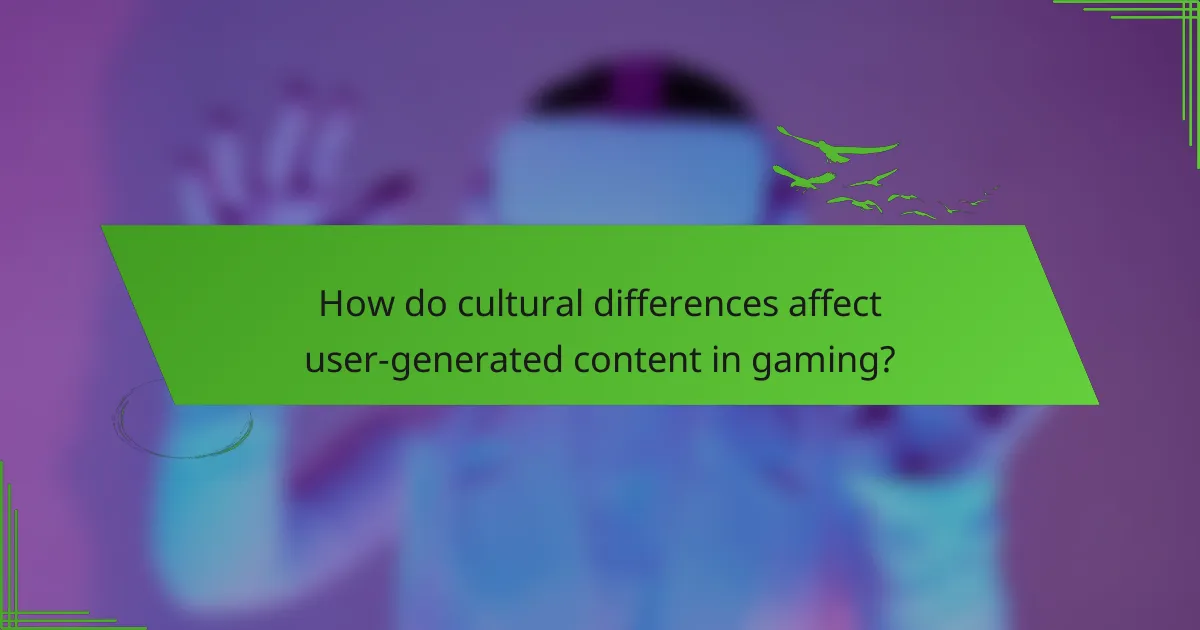
How do cultural differences affect user-generated content in gaming?
Cultural differences significantly influence user-generated content in gaming by shaping community engagement, creation techniques, and benefits. Different cultures bring unique perspectives, creativity, and values that enhance the gaming experience. For example, players from collectivist cultures may focus on collaboration, while those from individualistic cultures may prioritize personal expression. This diversity leads to varied content styles, fostering richer game environments. Additionally, cultural context can affect the reception of user-generated content, impacting its popularity and relevance within specific communities. Understanding these differences is crucial for developers aiming to engage a global audience effectively.
What unique attributes of user-generated content resonate with gamers in different regions?
User-generated content resonates with gamers through unique attributes like cultural relevance, creativity, and community-driven narratives. These elements foster deeper engagement and connection across different regions. For instance, local gaming cultures influence the types of content created, reflecting regional interests and humour. Additionally, the collaborative nature of user-generated content encourages players to share experiences, enhancing community bonds. This interaction differs globally, with some regions prioritising competitive content while others focus on storytelling or artistic expression.
How do gaming communities in various countries approach content creation?
Gaming communities worldwide approach content creation through diverse engagement strategies and techniques. In countries like Japan, communities often focus on intricate storytelling and character development, fostering a strong narrative-driven content culture. In contrast, North American communities emphasise competitive gaming, leading to user-generated content that showcases skills and strategies.
European gaming communities may prioritise collaboration, with many players creating mods and custom game content together. This collaborative approach enhances community bonds and encourages innovation. Meanwhile, in regions like South Korea, streaming and esports content dominate, with communities actively engaging through live broadcasts and interactive platforms.
Each community’s unique cultural background influences its content creation methods, resulting in a rich tapestry of gaming experiences globally.
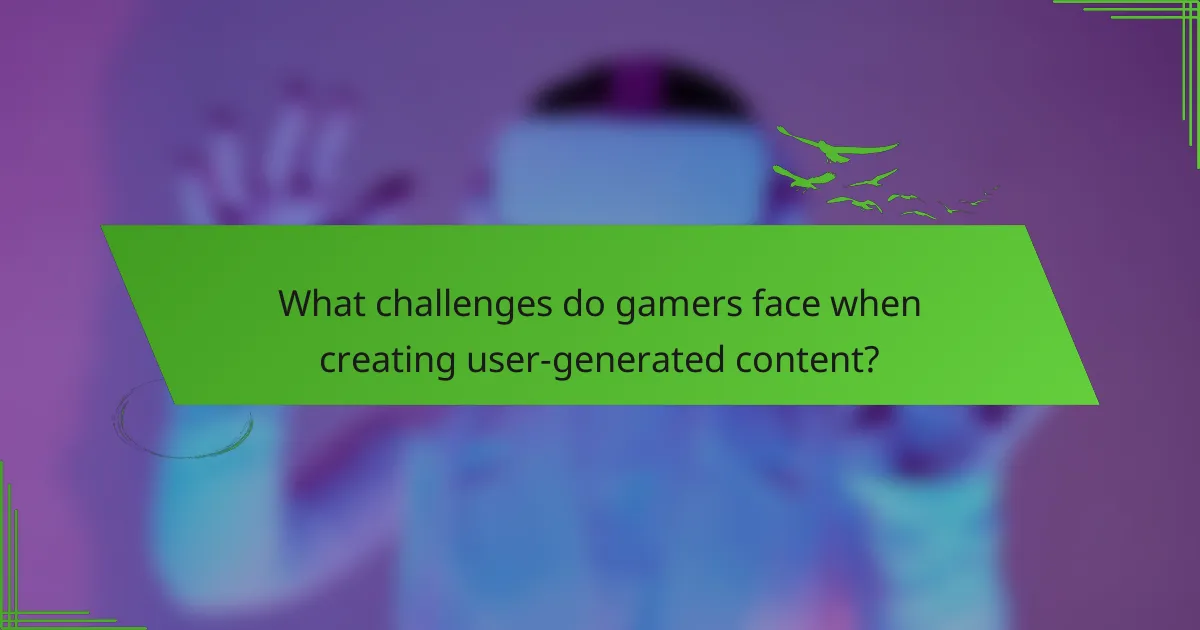
What challenges do gamers face when creating user-generated content?
Gamers face several challenges when creating user-generated content, including technical skills, resource limitations, and community feedback. Many lack the necessary software expertise to produce high-quality content. Additionally, limited access to tools and assets can hinder creativity. Negative feedback from the community can discourage creators, impacting their motivation. Finally, navigating copyright issues can complicate the content creation process, as original works may unintentionally infringe on existing intellectual property.
How can technical limitations hinder the content creation process?
Technical limitations can significantly hinder the content creation process by restricting tools, resources, and creativity. Insufficient software capabilities may lead to subpar user-generated content quality. Limited hardware can affect performance, leading to frustration among creators. Additionally, inadequate internet connectivity can hinder collaboration and sharing within gaming communities. These factors can diminish engagement and reduce the overall effectiveness of user-generated content initiatives.
What common misconceptions exist about user-generated content in gaming?
Common misconceptions about user-generated content in gaming include the belief that it lacks quality, is only for niche audiences, and doesn’t contribute to the gaming ecosystem. Many assume that user-generated content is unregulated and chaotic, ignoring the community guidelines that often govern these creations. Another misconception is that it primarily serves as a marketing tool, rather than a genuine means of community engagement and creativity. Additionally, some believe that user-generated content is only relevant for specific genres, whereas it can enhance experiences across various game types.

What are the best practices for optimizing user-generated content engagement?
To optimize user-generated content engagement in gaming, focus on fostering community interaction, encouraging creative contributions, and highlighting the benefits of participation.
1. Create clear guidelines for content submissions to maintain quality and relevance.
2. Implement regular contests or challenges to stimulate creativity and reward contributors.
3. Engage with the community by responding to content, showcasing top submissions, and facilitating discussions.
4. Utilize social media platforms to amplify user-generated content and reach a broader audience.
These practices enhance community involvement and enrich the gaming experience.
How can creators effectively promote their user-generated content?
Creators can effectively promote user-generated content by leveraging community engagement, showcasing creation techniques, and highlighting benefits. Engaging with the community encourages participation and fosters a sense of belonging. Utilizing platforms that support user-generated content can amplify visibility. Creators should also share tutorials and tips to enhance content quality, making it more appealing. Highlighting the benefits, such as increased brand loyalty and community growth, can motivate users to contribute actively.
What strategies can developers implement to encourage user-generated content?
Developers can encourage user-generated content by implementing strategies that foster community engagement and creativity.
Offering incentives, such as in-game rewards or recognition, motivates players to contribute. Creating user-friendly tools for content creation simplifies the process, enabling more players to participate. Hosting contests or challenges can stimulate creativity and generate excitement around new content. Establishing a supportive community through forums or social media enhances collaboration and sharing among users. Finally, showcasing user-generated content in-game or on official platforms validates contributions and inspires others to create.
